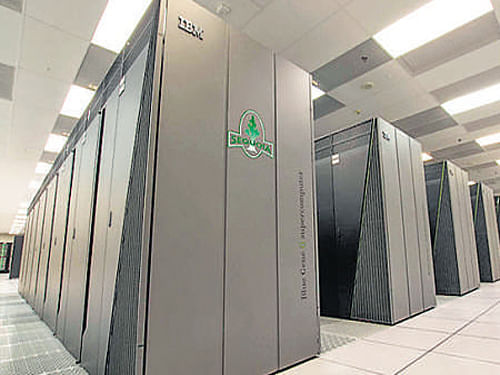
Top science centres in the country like Isro, IISc and select IITs have started work on a mission to build and run the fastest supercomputer that will work at exaflops per second, faster than the current Petaflops performance worldwide.
There is no exaflop supercomputer in the world yet and the first one is expected to emerge around 2019-2020, which is exactly when India has planned to launch its own.
India’s proposed new supercomputer is set to work at 132 exaflops per second as against an 1 exaflops per second machine being built by Cray Incorporated, the iconic American computer company which has projected that its machine would be ready by 2020.
The IISc-Isro project has the backing of the Centre which has set aside Rs 11,000 crore for its development (roughly $2 bn), apart from support to the other major initiative of having 100-150 supercomputers at the local, district and national levels under a national programme.
Prof N Balakrishnan, Professor at the Supercomputer Education and Research Centre (SERC) and Associate Director, IISc, told Deccan Herald: “The world does not have an exaflop supercomputer yet. The first one is to come up around 2019. Research work on exaflops is underway at IISC, Isro and a few IITs and C-DAC for India’s own proposed exaflop supercomputer. It is a collective project and scientists from around the country are involved in it.”
But what India’s science institutions are working on is no easy task, with the senior professor expressing caution about the project. “Taking up research on exaflops itself is a big step. An exaflop machine is not only hard to build, but it is also very difficult to just run it. The system requires a level of energy way above normal levels. We need to have energy-efficient systems in place to build and run this machine. Higher the energy consumed, higher the costs. Good system and energy management will be crucial in cutting down costs.” India’s supercomputer program was initiated in the late 1980’s when the US government launched sanctions against India that was seeking to establish supercomputing base in the country. The US thinking was that India would use the same for military objectives, not just civilian, and so, is best denied.
But India managed to come up with PARAM 8000 supercomputer, considered India’s first. Built in 1990 by Centre for Development of Advanced Computing, it was replicated and installed at ICAD Moscow in 1991 with Russian collaboration. The fastest supercomputer in India now is the one at the Indian Institute of Tropical Meteorology, the second fastest one at Pune’s Centre for Development of Advanced Computing and the third fastest at Bangalore’s CSIR Fourth Paradigm Institute.